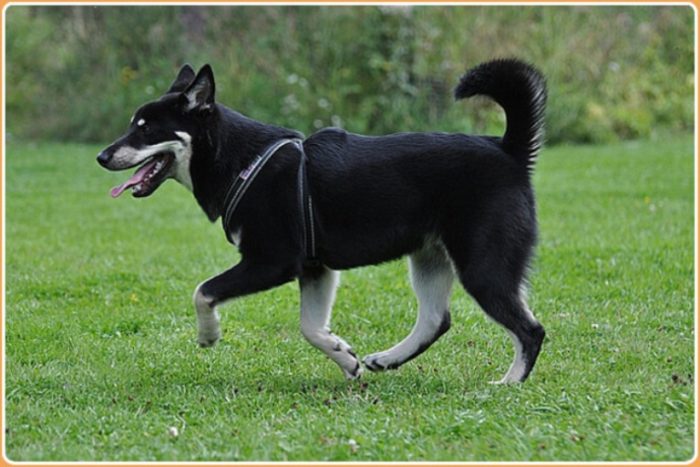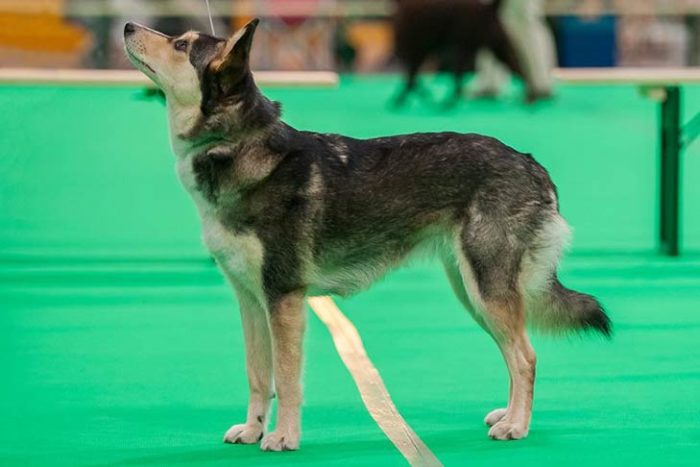The origin of the Lapponian Herder is traceable to the Sami people of the Arctic region but the dog is presently reared in many homes across the as a family pet. This medium-sized pup has an admirable temperament that makes it a great family pet but owners must watch out for its natural herding instinct that may rear its head from time to time. Thus, it is not advisable to leave the breed unsupervised in the company of children and other household pets.
Table of Contents
Origin Of The Lapponian Herder Dog Breed
An indigenous cluster of Finno-Urgic people called the Sami people who once populated the Arctic region takes the credit for developing the Lapponian Herder. The Sami people’s part of the arctic region now encompasses parts of Norway, Sweden, Russia, and Finland. Originally, the Lapponian Herder had no fixed appearance standard and was put to work in managing herds of reindeer.
The breed persisted until World War II when a majority of the original breeds of canine were lost. Between the 1950s and 1960s, breeders in Sweden and Finland sought to recreate and restore the different varieties of the old reindeer herding dog breed. It was this project that birthed breeds like the Lapponian Herder, including others like the Swedish Lapphund and the Finnish Lapphund.
Important Things To Know About the Lapponian Herder
- The breed is affable and friendly – it loves interacting with people
- Trainability and an admirable level of intelligence – the Lapponian Herder is moderately easy to train
- Hard-working and energetic – the canine thrives when it is given something to do
- Very strong herding instinct – the dog is likely to start herding children and other pets
- High activity level – the dog is a high-maintenance canine
- High barking level – your Lapponian Herder tends to bark while working
- Appearance – an athletic frame balanced on fairly large body size. The males come larger than the females.
Features of The Lapponian Herder
- The Lapponian is not heavily boned but the well-muscled dog comes in medium sizes
- The coat of the Lapponian Herder is dense and double – while the outer coat which is mid-long has a harsh texture, the undercoat comes with a fine texture and is very thick. The fur is straight without curls and the tail sports a thick plume and curls over the back
- The breed has just three acceptable colors which are black, dark grey, or dark brown. Compared to the topcoat, the undercoat occurs in a lighter shade. There may be tan or white markings
- The nose, lips, and eye rims of the Lapponian Herder are black but the color of its nose is usually a reflection of the coat color. It has prick ears
- The females come with a devoted expression while the males sport a lively and alert expression
Health
Generally, the Lapponian Herder is remarkably healthy. Being a “primitive” breed, it is saved from several of the inheritable ailments that dogs with loads of “artificial” development have to contend with. However, the breed tends to suffer from skin allergies, ear infections, hip problems, and bloating.
Though heart disease and cancer are the primary causes of death in any canine breed, with a bit of luck, the Lapponian Herder can live from 10 to 14 years.
Training
Blessed with great intelligence, the Lapponian Herder which is a calm and compliant pup is easy to train. In fact, it is a trainer’s delight and usually makes a pleasant companion during training sessions. Rather than raise your voice or employ disciplinary actions with this furbaby, you will get better results by applying positive reinforcement methods.
While teaching your canine friend basic manners, take advantage of its high activity level and use high-intensity training games to harness their energy; this makes the job easier. All you need with this pop is consistency and proper authority and you will see it responding admirably in sports such as herding trials, obedience, agility, tracking, flyball, and more.
Feeding
Whether homemade or commercially prepared, whatever you decide to feed your Lapponian Herder must be of high quality. However, the amount of food will depend on variables like the dog’s age, size, activity level, health condition, and more. Three cups of kibble are ideal but for a dog that is a sufferer of bloating, the food is best divided into two meals daily. You should watch the number of treats you feed your pooch to keep excess weight at bay.
Grooming
Because the coat is double and thick, it sheds excessively during its shedding season which occurs two times yearly – fall and spring. Thus, during the shedding season, brushing will be intensified to at least once a day to remove dead hair. For the rest of the year, weekly brushing will suffice. You won’t have to contend with removing tangles as the dog’s coat is tangle-free.
Get your vet to approve an oral plan to be used in brushing the dog’s teeth to avoid periodontal disease. The nails should be trimmed when due and the ears should be constantly checked and cleaned when dirty.
Exercise

Being a high-maintenance dog, the Lapponian Herder may not be the best choice for inexperienced dog parents. Its daily exercise sessions must be up to an hour or more, including long walks. The dog loves hiking and running, so you can indulge it. Suitable activities for this pup include rally, barn hunts, nose work, dock diving, search and rescue, and obedience. The dog’s herding instinct calls for the need to raise it in a fenced compound where it can run free.
Temperament
The is a fun-loving and independent breed known to be friendly, affectionate, energetic, eager to please, intelligent, and vocal. It makes a great companion for its family members but is a bit reserved around visitors or strangers. Because of its exceptionally energetic nature, the dog cannot be left without entertainment for long; otherwise, it will take to some unpalatable behaviors that may be destructive and annoying. Once the dog is getting the right dose of activity, it will be able to adapt to different living arrangements. You may even be able to keep your Lapponian Herder in an apartment.
Early socialization is key with this breed and it must have something to do at all times to satisfy their inherent herding mentality. It is not a strange sight to see your pooch barking while working.
Read Also: When To Be Concerned About A Dog Sleeping With Their Eyes Open
Do Lapponian Herders Make Good Family Pets?
The Lapponian Herder can be quite fantastic as a family dog as it loves to play with children, thanks to its friendly and patient nature. However, we must remember to always watch out for the dog’s herding instinct around children as it may mistake them for a herd of reindeer to be flocked and start nipping at their heel.
On the flip side, children should be taught how to respect dogs and not encroach on their space. The dog can also cohabit with other household pets but the herding instinct may also arise, so always be on the watch and try going the way of early socialization.
